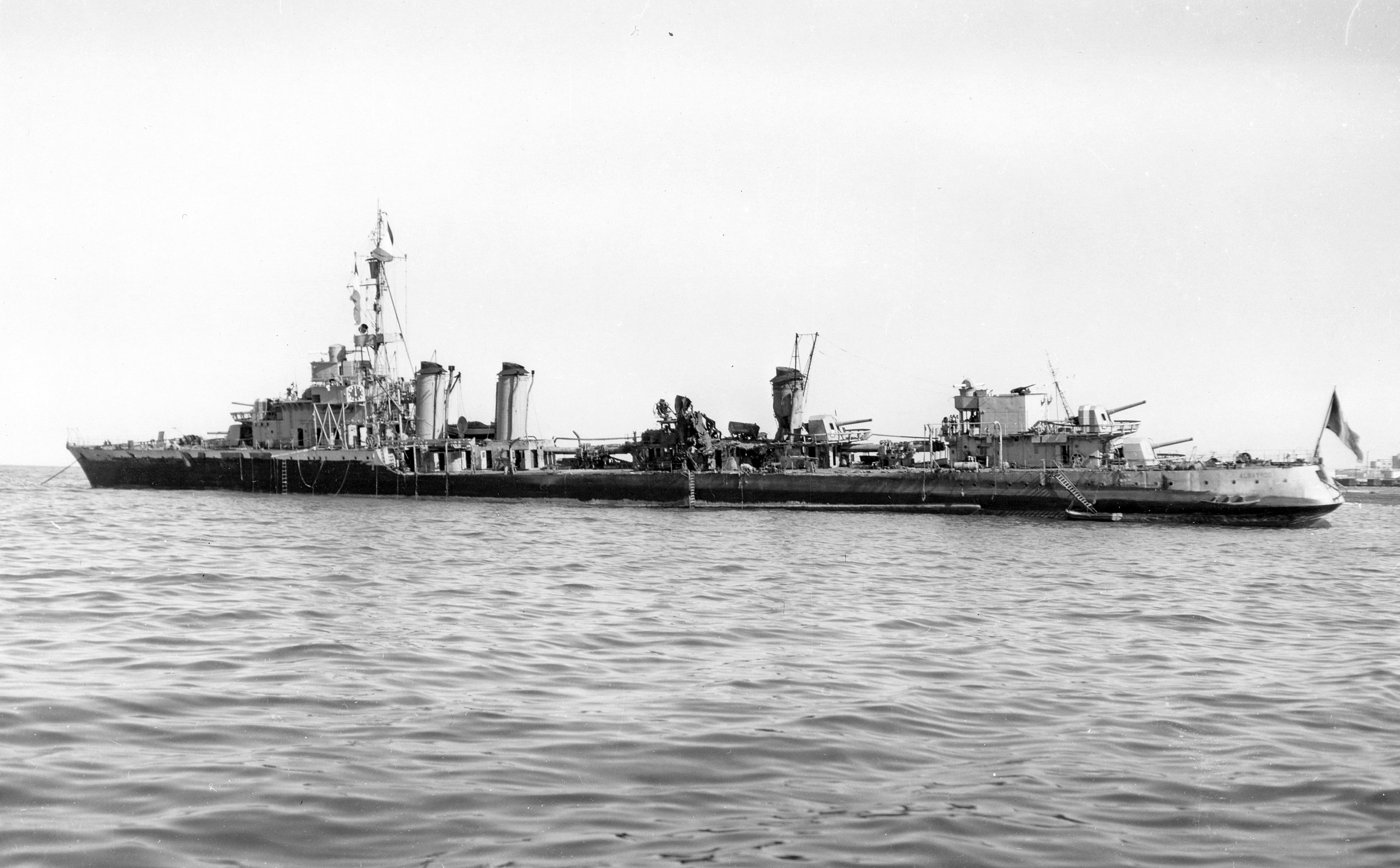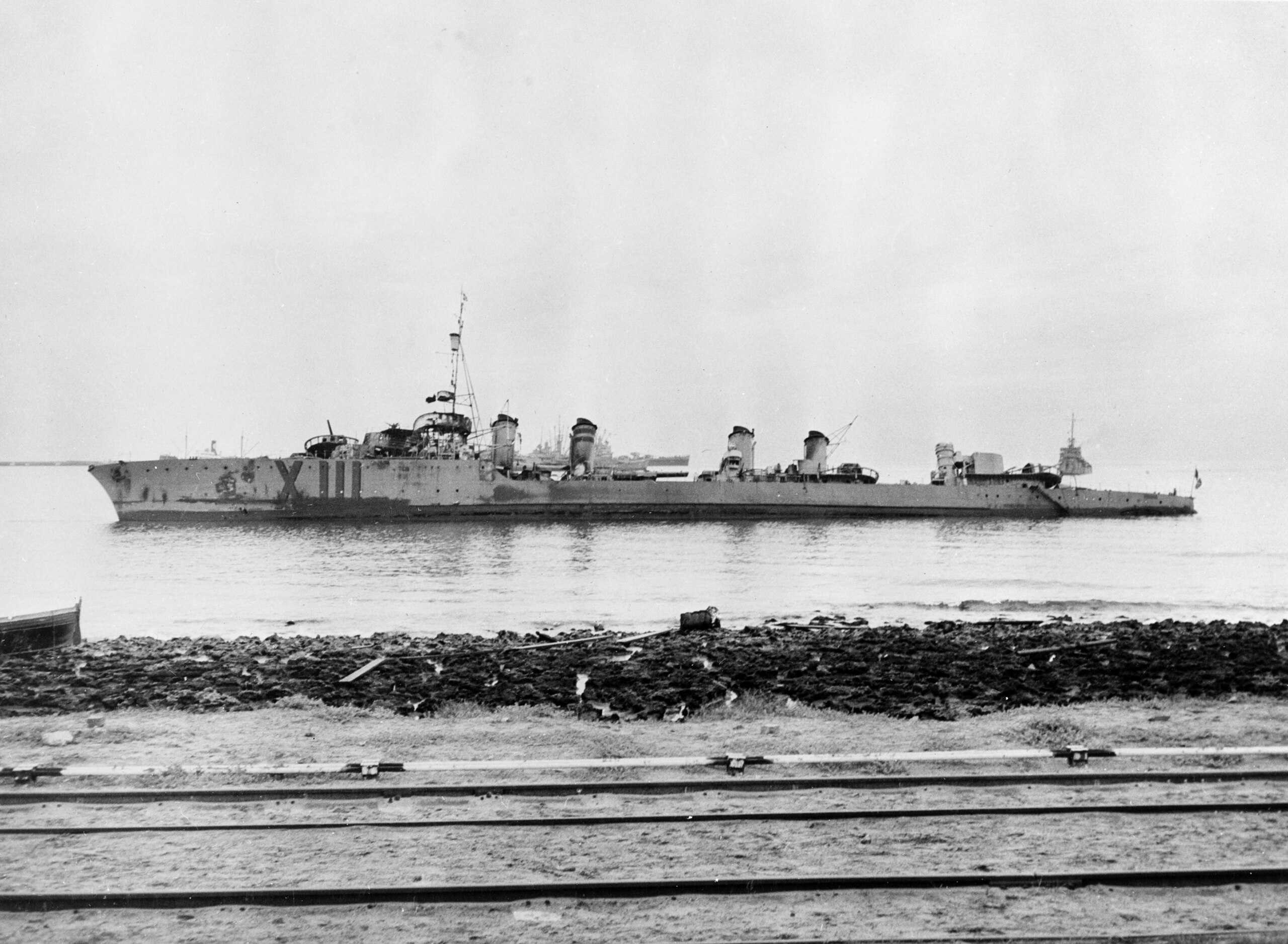Norway 1940:
French Super Destroyers:
The Aigle Class
by Mike Bennighof, Ph.D.
September 2023
 For the 1927 program, the Marine Nationale would build six more contre-torpilleurs to a modified version of the Guépard design. The Aigle class would externally look almost identical to Guépard, with the differences coming in armament and propulsion. For the 1927 program, the Marine Nationale would build six more contre-torpilleurs to a modified version of the Guépard design. The Aigle class would externally look almost identical to Guépard, with the differences coming in armament and propulsion.
A new 138.6mm gun, the Model 1927, would replace the disappointing Model 1923. This new weapon was a scaled-down version of the German 150mm KL/45 guns of the super-destroyer S113, handed over to the French as war reparations and named Amiral Sénès in French service. The German weapon had a reliable and rugged semi-automatic breech, something earlier French weapons had lacked. In theory it could fire twenty rounds per minute, but the speed of the crew and the ammunition hoists limited this to about twelve rounds per minute for short periods.
The new boats would carry five of them, in the same positions as Guépard; the design also included a single 75mm Model 1925 anti-aircraft gun – the Model 1897 “Madame Soixante-Quinze” on a new mounting – but sanity prevailed and the worthless weapon was deleted. Instead, they received four 37mm and four 13.2mm anti-aircraft guns. They carried the same six torpedo tubes as the previous class. Plus, two chutes and four throwers for depth charges.
While the first four new boats had very similar machinery to the previous class, both boilers and turbines had received a series of seemingly minor improvements that added up to a much more reliable power plant. Épervier and Milan, the two boats built in naval dockyards, served as trial boats for new super-heated steam boilers. In all six the hull form had been slightly shortened and deepened, with the overall result of half a knot more in speed; all six boats comfortably met and exceeded their design speed on trials. Five of the six managed to top 40 knots.

Contre-torpilleur Milan, in happier times.
As with the previous boats, construction took an abnormally long time, over four years for some boats, with the main armament arriving very late on top of the complicated design. The first to enter service joined the fleet in January 1932 and the final pair in May 1934.
Aigle, the lead boat, helped escort the older French battleships across the Atlantic during the early months of the war, as they shuttled France’s national gold reserves to Canada. She saw action in the Mediterranean in June 1940, and after the French Armistice went into reserve status. Dockyard workers scuttled her in November 1942, an Italian salvage team raised her but American bombers sank her again in November 1943. Her wreck would be raised again and scrapped after the war.
Gerfaut saw limited action in both the Mediterranean and Atlantic during the war’s first months before mechanical problems led to several yard periods. She was under repair in June 1940 but the dockyard actually completed the work and Gerfaut joined the Force Haute Mer, the Vichy fleet’s reaction force. In November 1942 she was scuttled in the Missiessy Basin, where submarines were usually based, and raised by the Italians in June 1943. The Italian salvage team declared her a total loss, and she was stripped of weapons, machinery, and equipment to aid in the repair of other ex-French vessels. Allied aircraft sank the empty hull in 1944, and she was scrapped on the spot in 1948.

Albatros beached off Casablanca.
Albatros participated in the French bombardment of the Italian coast in June 1940, receiving a 152mm shell in her aft boiler rooms that killed 12 crewmen. Repaired afterwards, she served with the Vichy fleet and was at Casablanca in November 1942 when the Anglo-American landings in French North Africa began. She suffered heavy damage from American heavy cruisers and aircraft, and was beached by her crew to prevent her sinking. The wreck passed to the Free French, who salvaged Albatros a month later and converted her to a gunnery training ship without her forward boilers and turbines and only three 138.6mm guns. She served in this role until 1959, when she became part of a Belgian breakwater before meeting the cutting torches in 1967.
Vautour helped escort troop convoys across the Mediterranean from the start of the war, until a collision with a French auxiliary cruiser laid her up for three months of repairs. She took part in the bombardments of the Italian coast in June 1940, and after several months in Vichy service she went into reserve in December 1940. The next year she underwent an extensive refit, made very slow under Armistice conditions, not returning to service until August 1942. In November her crew conducted very thorough demolitions, leaving her half-capsized and wrecked. A French firm contracted by the Royal Italian Navy re-floated her in April 1943, but she was declared beyond salvage and abandoned, to be sunk by American air attack in November 1943, smashed up again the following April, and finally scrapped in place in 1951.
Épervier began the war in the Mediterranean, part of the reaction force based at Bizerte in Tunisia in case of Italian entry into the conflict. Afterwards she joined the escort for the troop convoy slated to intervene in the war between the Soviet Union and Finland. Political maneuvers kept the convoy from sailing, and finally it set out not to help Finland but to assist Norway’s defense against German invasion. Épervier saw action off Norway, fending off multiple German air attacks, and when France signed an Armistice with Germany in late June she steamed to Casablanca in the French protectorate of Morocco. She fought the Anglo-American invaders in November 1942 off Oran in Algeria, and was sunk by the British light cruiser Aurora.

Milan beached off Casablanca.
Milan served alongside Épervier through most of the early part of the war, but as French resistance began to crumble, she steamed at top speed for Bordeaux on a secret mission, stopping in Brest to pick up Charles de Gaulle. In Bordeaux she loaded 26 drums of heavy water – the world’s entire stock at the time – along with French nuclear physicists Lew Kowarski and Hans von Halben, as well as their papers detailing a design for a nuclear fission reactor. Milan brought them all safely to Plymouth, England, and then went on to Casablanca. In November 1942 she led the sorties of French warships attempting to attack the American invaders, and had to be beached following heavy damage from both shell and bomb hits. Afterwards she was declared a total loss and broken up on the spot.
The Aigle class (Épervier and Milan are sometimes classed separately, due to their different boilers, or grouped with the following Vaquelin class) marked a significant improvement over earlier contre-torpilleurs. They had better guns, better stability to make them a better gunnery platform, and much greater reliability. They were also tremendously more expensive (46 million Francs apiece, compared to 32 million for the previous class), and probably not a very good investment compared to the standard fleet destroyers the Marine Nationale also constructed in this period.
Épervier and Milan appear in Second World War at Sea: Norway 1940, and their sisters in Second World War at Sea: The Middle Sea.
Click here to join the Gold Club
See your Gold Club Insider newsletter for ordering information.
Sign up for our newsletter right here. Your info will never be sold or transferred; we'll just use it to update you on new games and new offers.
Mike Bennighof is president of Avalanche Press and holds a doctorate in history from Emory University. A Fulbright Scholar and NASA Journalist in Space finalist, he has published a great many books, games and articles on historical subjects; people are saying that some of them are actually good.
He lives in Birmingham, Alabama with his wife and three children. He will never forget his Iron Dog, Leopold.
Want to keep Daily Content free of third-party ads? You can send us some love (and cash) through this link right here.
|
